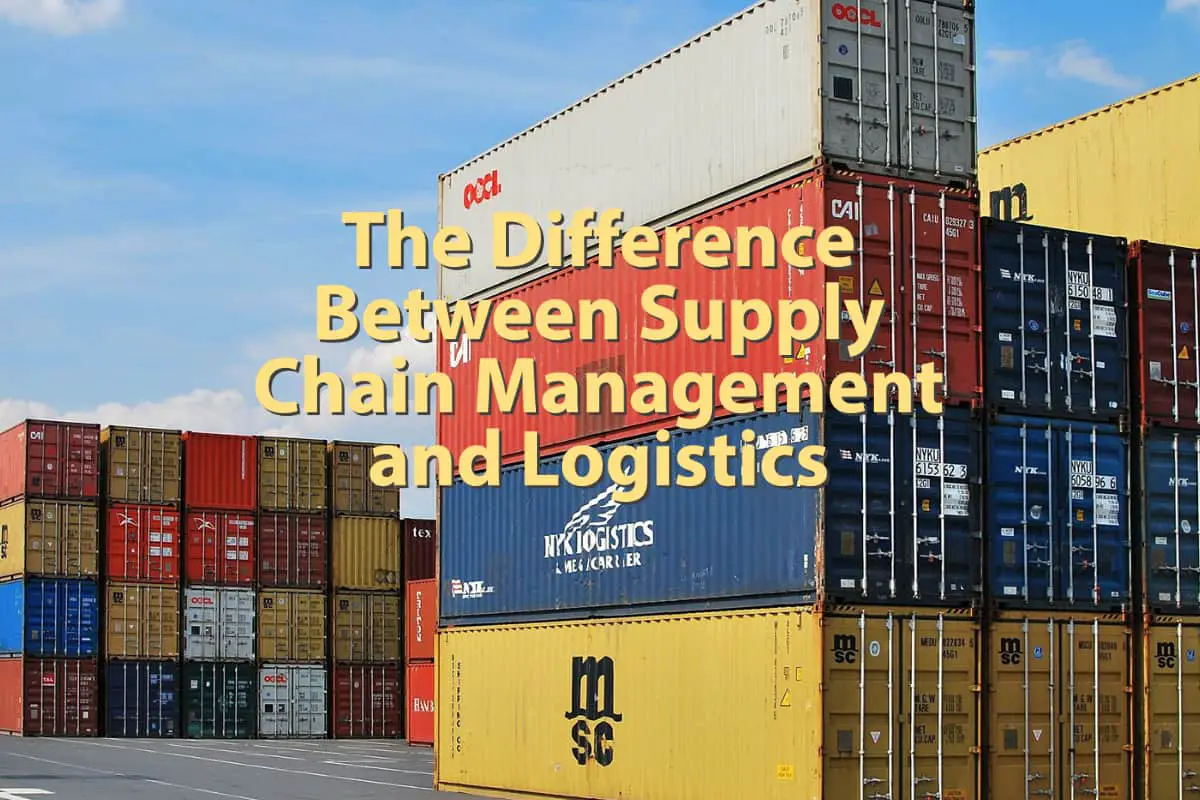There can sometimes be confusion about exactly what the difference is between supply chain management and logistics. The two may seem similar, but they have different functions.
Supply chain management is about the collaboration and partnerships to get the goods from raw material to the end consumer; it is about the partnerships and collaborations within this supply chain process. Logistics is one part of supply chain management; logistics is about moving goods from one place to another.
What is Supply Chain Management?
Supply chain management is responsible for the entire product or service from beginning to end
. For example, for a home decor product, the supply chain management would be responsible for sourcing and procurement, manufacturing, shipping, importation, wholesale, and distribution to retail or the end consumer. Supply chain management is about the process, plans, implementation, and control of the goods from the beginning stages to the end-user.Supply chain management brings together multiple partners to source, manufacture, transport, store, supply, and sell the goods. In other words, it is the entire process from the beginning stages of manufacturing the product to delivering the product to the end-user.
Here are some as aspects of Supply Chain Management:
- About Collaboration and Partnerships – Supply chain management has a lot to do with collaboration and partnerships. The supply chain is about cooperation and collaboration within the supply chain to ensure products and services will ship at the quality, quantity, time, and price.
- Management of Inventory – Inventory management is key to any supply chain management. It is about making sure you do not run out of the products or parts you need.
- Order Management – The supply chain process manages all the suppliers’ orders from manufacturers to the logistics – in fact, the supply chain manages any order within the supply chain process.
- Shipment Tracking – Supply chain management is also about tracking the flow of goods and other assets through the global supply chain. This is an essential part of supply chain management.
- Problem Solving – Supply chain management looks at any problems or quality issues that may arise. A good supply chain management will always be looking at how it can ensure the supply chain is efficient and cost-effective.
A supply chain can work across many organizations from the suppliers of the raw materials – to the manufacture – to the logistics people who will transport the goods from one point to another – to the wholesalers who will purchase the goods and distribute them to other sales channels, and finally the retailers who will send to the end customer.
Some many organizations and partnerships are essential in supply chain management. Supply chain management is important because many partnerships and pieces work together for the supply chain to run efficiently and effectively.
What is Logistics?
Logistics is part of the supply chain management process; logistics is how the goods will move from one point to another. So Logistics is about moving the products by land, air, and sea. It is about moving the goods as quickly, efficiently, and cost-effectively as possible.
Here are some aspects about the logistics process:
- Moves Good from Place to Place – Logistics moves the goods from place to place within the supply chain. A supply chain manager should look at the fastest, most efficient, and cost-effective way to move the goods from place to place.
- Stores the Goods – Many times, logistics providers will store the goods in warehouses or other facilities once they reach the destination.
- Send to End Customer – Some logistics companies will also specialize in sending the goods to the final customer.
In straightforward terms, the difference between supply chain management and logistics is this – supply chain management is the partnerships and collaborations for all parties that work to ensure the product or service reaches the end customer – the logistics are part of the supply chain management and is concerned with moving the goods from one place to another place. In some instances, the logistics companies will store the goods and help move the products to a retail store or end consumer.
Even though supply chain management and logistics are related, they are not the same thing. Supply chain management and logistics are concerned with ensuring the correct product reaches the customer at the agreed quality, quantity, time, and price.
At Mondoro, we would love to help you with your home decor supply chain management needs. We can help you create, develop, and manufacture home decor products here in Asia; to find out more, please contact us by clicking here.
Related Questions
What Are Some Reasons to Look Towards Manufacturing Your Products in Vietnam?
With the tariffs that countries like the United States have placed on China, Vietnam is one country that has become a clear winner in the trade war. One reason is that Vietnam has a relatively large, young, educated, and skilled population. The Vietnamese Government is also business-friendly, and the country continues to develop many excellent shipping ports.
To find out more you can read 8 Reasons to Look Towards Manufacturing Your Products in Vietnam by clicking here.
Why Should You Understand the Culture of Your Product Sourcing Country?
It is important to understand the culture of the country you are sourcing and purchasing your products from. Things you can do are: 1) check a map, 2) do your homework about the place you are buying from, 3) show a genuine interest in the country and culture, 4) try to learn a few basic words of the local language, 5) see a few of the cultural sites, 6) be adventurous in trying new foods, 7) ask intelligent questions about the country and 8) find topics of conversation that will reach out across the cultural divide.
You can find out more by reading 8 Tips to Understand the Culture of Your Product Sourcing Country by clicking here.

